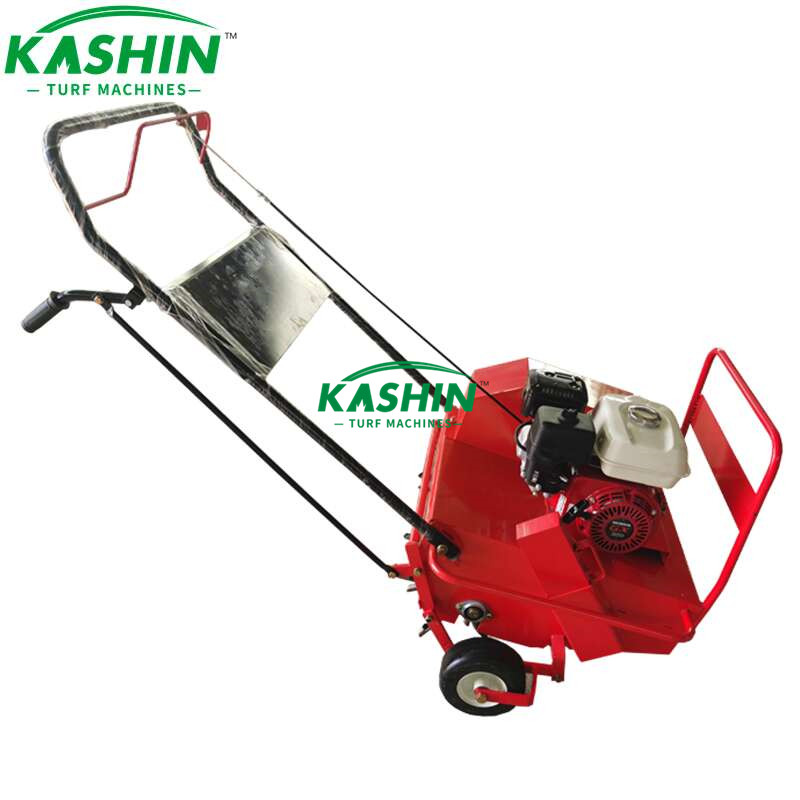The rise of the lawn industry is a symbol of human civilization and social progress. my country’s lawn industry has now entered a new period of large-scale development. In recent years, cool-season lawns with high ornamental value have developed rapidly.
Cool-season turfgrass, native to Northern Europe and Asia, has a suitable growth temperature of 15 to 25°C. It has strong cold resistance and relatively weak heat resistance. It is classified into Bentgrass, Festuca, and Blackgrass of the Festuinae subfamily. Wheatgrass and Poa spp.
Due to changes in cultivation conditions, the quality of cool-season grasses has declined to varying degrees. There are two reasons: first, the variety selection is not suitable for environmental factors; second, lawn maintenance and management are not in place. People often say “three parts for planting, seven parts for management”, which shows that maintenance and management are very important for lawn construction.
Cool-season grass likes cool and moist weather. The weather is hot in summer, and the growth of cool-season grass weakens, making it highly susceptible to various bacterial and fungal diseases. If the management method is improper, once the disease is contracted, it will not only affect the viewing effect of the lawn, but in severe cases, it will also lead to the death of large areas of cool-season lawns, causing large economic losses. Greengrass in the northern region now summarizes the wrong methods in summer management. You can refer to this article to prevent problems with cool-season lawns in summer.
1.One-sided emphasis on low trimming
One-sided emphasis is placed on the role of low mowing in promoting lawn ventilation and light transmission, while ignoring the growth characteristics of cool-season grass itself.
In order to increase the ventilation and light transmission of the lawn in summer and adapt it to the hot environment, the lawn is mowing too low, which causes the lawn to quickly weaken and grow slowly, and its adaptability to the environment decreases sharply, creating favorable conditions for the occurrence of various diseases. . The correct approach is to increase the lawn mowing height by 1 to 2 centimeters in summer to enhance the lawn’s ability to withstand adverse environments. Prune every 10 to 15 days, no more than 1/3 of the total height each time.
2. Increase the application of quick-acting fertilizer in a one-sided manner
Lawn growth weakens in summer. Usually, in order to maintain vigorous lawn growth, more quick-acting fertilizers are applied to the lawn, causing the lawn to grow excessively and reducing resistance.
The correct approach is to apply an appropriate amount of slow-release compound fertilizer or organic fertilizer to the lawn in late spring or autumn. It not only ensures the lawn’s demand for fertilizers, makes the lawn grow strong and improves disease resistance, but also does not cause the lawn to grow excessively.
3. Ignoring the way and method of watering
Water is the most critical factor in determining how well cool-season grass grows. The summer is hot and dry. In order to ensure the water demand of cool-season grass, managers spray water on the lawn every day. Some even arrange the water spraying time during the hot noon. As a result, the deep soil is dry for a long time, while the surface soil is wet for a long time, making the lawn root system shallower and shallower, and the adaptability and resistance are reduced. Due to the high humidity of the surface soil, diseases such as brown spot and blight continue to occur during the high temperature season. At the same time, this method of watering also greatly increases the evaporation of water, causing a huge waste of water resources.
The correct approach is to combine the soil moisture conditions and water once every 3 days during drought, 10 to 20 cm each time, in the morning and evening to reduce evaporation and save water.
4. One-sided emphasis on management measures such as drilling holes, combing grass, and removing the hay layer
The above three management measures play an important role in increasing the breathability of the lawn and enhancing the growth of the lawn. However, due to the weak growth of the lawn in summer, they should not be carried out. It should be done in spring and autumn when cool-season grasses are growing vigorously.
5. Ignoring the universality of weeds
Weed removal is an important part of summer lawn management. Weeds refer to all grass species other than purposefully planted lawn grass. When many people weed cool-season lawns, they subjectively believe that warm-season grasses such as buffalo grass are also turfgrass species, and actively leave them behind.
Because warm-season grasses such as buffalo grass have well-developed stolons and grow into lawns faster than cold-season grasses, the newly built cool-season lawn quickly turns into a warm-season lawn such as buffalo grass within two or three years. The original planting goal was not achieved.
6. Neglecting the prevention of diseases
Due to the high temperatures and muggy climate in summer, lawns are prone to a variety of diseases. In management, diseases are often discovered and then controlled, which not only seriously affects the lawn viewing effect, but also causes economic losses.
Correct maintenance measures should be taken to enhance the resistance of the lawn, and fungicides such as chlorothalonil should be sprayed on the lawn every time it is pruned to nip the disease in the bud and allow the lawn to grow normally.
Post time: Jun-24-2024

